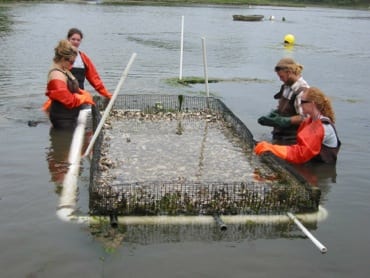Who is a member?
Our members are the local governments of Massachusetts and their elected and appointed leadership.
 On May 2, Mashpee’s special town meeting approved the creation of a new Natural Resources Department, along with a new director position, as the next step in supporting a water quality management and nitrogen reduction plan that relies on oysters as natural filters for the town’s waterways.
On May 2, Mashpee’s special town meeting approved the creation of a new Natural Resources Department, along with a new director position, as the next step in supporting a water quality management and nitrogen reduction plan that relies on oysters as natural filters for the town’s waterways.
The town must wait 30 days for review by the attorney general’s office before the reorganization is official, Town Manager Rodney Collins said.
Reporting to the director of natural resources will be the town’s harbormaster, shellfish constable, waterways assistants, and the relatively new shellfish and water quality-monitoring technician, a position created at Town Meeting last October.
The shellfish constable and harbormaster were once their own departments, Collins said, but in 2008 were merged into the police department to streamline management oversight and to have fewer department heads that report directly to the town manager.
In the past couple of years, through development of the town’s nitrogen reduction plan, it was determined that the town needed to provide the shellfish constable with more resources and more personnel, Collins said. That determination led to the new water quality-monitoring technician and last month’s creation of the new department.
The town’s wastewater and nitrogen management plan, required by the federal Clean Water Act and the Department of Environmental Protection, continues the use of shellfish to clean waterways, a program that Mashpee started under Shellfish Constable Richard York in 2004.
Nitrogen causes algae blooms that can shade out grass in the water, and kill it, before ultimately taking up all the oxygen and killing all life in the water. York said a monitoring program documented that a widespread “fish kill” in 2000 resulted from that very problem.
Partnering with the Barnstable County Cooperative Extension and Americorps Cape Cod, the town restored an oyster fishery wiped out in the 1980s, primarily by disease, and used those oysters to filter out nitrogen and algae in the Mashpee River. The project had a target of producing a million oysters, which would filter 500 kilograms of nitrogen – 10 percent of the reduction needed to restore water quality, York said.
“So far we’ve harvested up to half a million oysters a year, but the bottom line on that is we haven’t had any fish kills since we re-established oysters in the river,” he said.
The current management plan uses oysters in brackish water with low salt content, while quahog clams are used in saltier water, York said. By using shellfish on top of conventional water management systems, York said, the town’s engineering firm calculated at least $180 million in savings at full build-out over conventional means alone.